6. Silver Bullet (1985) Directed by Daniel Attias
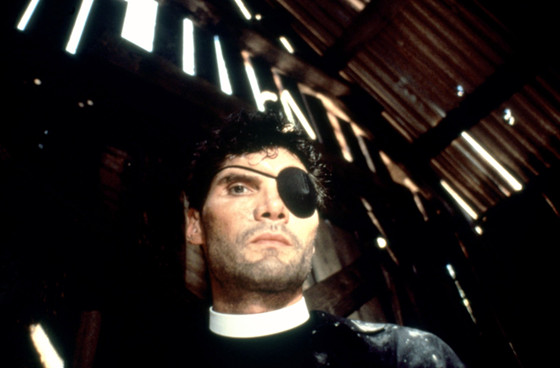
Traditionally, movies about lycanthropy follow a person surviving an attack of the wolf, only to learn later that the canine was a werewolf. The main character is bound to turn into a monster himself. Generally, there’s no way out of it, except death. Although, some books and movies offered salvation via killing the lycanthrope that passed the curse.
In his 1983 novel “Cycle of the Werewolf”, Stephen King successfully deconstructs the werewolf subgenre. Instead of dealing with what it’s like to be a werewolf, King is focused on how a small town will react if a lycanthrope starts killing people one by one. The novel consists of twelve chapters, representing the twelve months of the year. Each full moon, the werewolf attacks.
In 1985, Dino De Laurentis came up with the idea of adapting “Cycle of the Werewolf”. Stephen King penned the screenplay, and Don Cascarelli of “Phantasm” fame was brought to direct the adaptation under the title “Silver Bullet”. Carlo Rambaldi, who helped to create monsters in Ridley Scott’s “Alien” and Andrzej Żuławski’s “Possession”, was responsible for creating the werewolf. And here the first production problem occurred.
De Laurentis disliked Rambaldi’s design, which King approved. While the movie mogul and the master of horror were fighting over the design, Cascarelli decided to shoot all the non-werewolf scenes. After shooting all the non-werewolf scenes, Cascarelli opted out of the movie and was replaced with Daniel Attias, who would finish the film with Rambaldi’s werewolf. Fun thing, viewers can easily tell the scenes shot by Cascarelli.
The production disputes didn’t hurt the picture. The movie has a powerhouse of performances from veteran actors like Everett McGill and Gary Busey, who not only ad-libbed his role but did all of his stunts. While the movie doesn’t work as a whodunnit film, as you can tell who the lycanthrope is pretty fast, it is still a good werewolf film and works well as a Stephen King adaptation.
Did it fail at the box office? No. Was it not well received by critics? Well, yes and no. It received a mixed review from Variety. The Chicago Tribune panned the movie. But, hey, Roger Ebert gave it three stars out of four in his review. So, why did it skip under the radar? Well, think of the time it was released. The 1980s was not only the golden age of slashers. It was also a golden age of werewolf movies. “American Werewolf in London”, “The Beast Within”, “Wolfen”, “The Company of Wolves”, “The Howling” and its many sequels. “Silver Bullet” remains kinda buried under other subgenre films. But it’s worth checking out.
7. Needful Things (1993) Directed by Fraser C. Heston
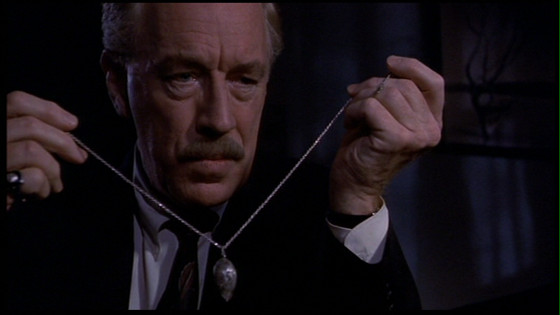
A new antique store opens in the small New England town of Castle Rock. The owner of the shop, mysterious Leland Gaunt, practices a buy now, pay later strategy. Visitors of the shop can get whatever they want, paying later with their souls. Hell breaks loose, and only Alan Pangborn, the Sheriff of Castle Rock, tries to save the day. That’s the premise of both Stephen King’s 1991 novel “Needful Things”, and its 1993 adaptation.
The movie follows the book pretty closely, and has quite a strong cast, with Max von Sydow as Leland Gaunt and Ed Harris as Alan Pangborn. There are enough chilling scenes and witty dialogue. Still, upon its release in late August 27, 1993, “Needful Things” grossed a bit over $15 million, attracting generally unfavorable reviews. So, what went wrong with the movie?
Well, you can blame everything on its run time. Shoving an almost 800 pages long book into a two-hours long movie is an impossible task. The multi-subplots of the novel don’t have enough space in the theatrical version of the film. As a result, things get confusing. However, if you get your hands on the German Blu-ray release of “Needful Things”, you can see that a four-hours version works as a better adaptation. But you need to consider King’s adaptations of the 1990s and what was popular.
Basically, the 1990s opened with the adaptation of “Misery”, which was successful at the box office, and Kathy Bates won an Oscar for her role as Annie Wilkes. Other adaptations of King’s works that attracted either financial or critical success, or both, were “The Shawshank Redemption”, “Dolores Claiborne”, and “The Green Mile”. As you can see, the public in the 1990s was favoring King’s psychological and fantasy sides over straightforward horror. Most of the 1990s straightforward horror adaptations tanked at the box office and received lukewarm critical reception.
Still, Stephen King remained the King of horror on TV. The four-hour version, which is now available on German Blu-ray only, was the version that was aired on TBS in 1996. Perhaps, if “Needful Things” were released directly to the TV screens, it would’ve made more impact and won’t be on the list.
8. Apt Pupil (1998) Directed by Bryan Singer
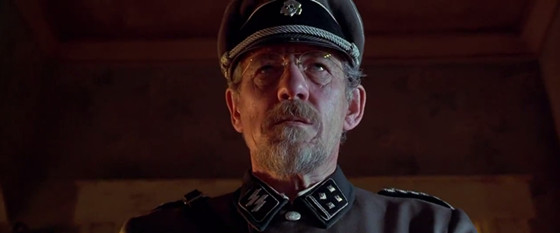
What is scarier? Stephen King’s books, fugitive Nazi criminals, or stories of sexual misconduct in Hollywood? Well, you don’t have to choose, if you are planning to delve into the production history of “Apt Pupil”. It is based on King’s story about mind-games between an American teenager and a fugitive Nazi criminal. And it is directed by Bryan Singer, whose career seems over amid sexual misconduct allegations. But first things first.
“Apt Pupil” was originally published in the 1982 short story collection “Different Seasons”, which was King’s first collection where he abandoned straightforward horror in favor of psychological thrillers and coming-of-age dramas. The story follows Todd Bowden, a Los Angeles teenager, who learns that his elderly neighbor is a Nazi war criminal Kurt Dussander. Instead of handing Dussander to the authorities, Todd decides to learn more about the Holocaust. All in all, it all leads to a tragic end.
The attempts to adapt the short story started soon after the publication of “Different Seasons”, all turning out fruitless until Bryan Singer arrived. The financial and critical success of Singer’s “The Usual Suspects” allowed him to get financial backing for the adaptation of “Apt Pupil”.
The film stars Ian McKellen as Kurt Dussander, and Brad Renfro as Todd Bowden. Both actors give equally brilliant performances. Made on a considerable budget of $14 million, the movie looks wonderful. It seemed that “Apt Pupil” was destined to open to great box office results and critical praise. To the filmmakers’ surprise, the movie made only $8.9 million at the box office and was panned by critics.
So, what went wrong? Firstly, “Apt Pupil” was released in the post-“Scream” era, which means that teenage-oriented slashers were on the rise again. “Apt Pupil” was released on October 23, 1998, during the highly competitive Halloween season, and tanked, debuting at #9 with $3.6 million. But that’s not the only problem with the movie.
While critics praised the performances of both McKellen and Renfro, they felt that the movie itself is nothing but a pointless study in cruelty. Unlike its source material, the adaptation has an open ending, which, instead of giving the viewers chills, only disappoints. Thus, “Apt Pupil” marks the only non-straightforward horror adaptation of King’s work of the 1990s, which failed critically and financially, and, more or less, faded into obscurity. It did surface with the recent allegations against Singer, as the director’s fixation on Renfro’s adolescent body feels a bit out of place.
Still, it’s worth watching for the performances of the lead actors.
9. The Dark Half (1993) Directed by George A. Romero
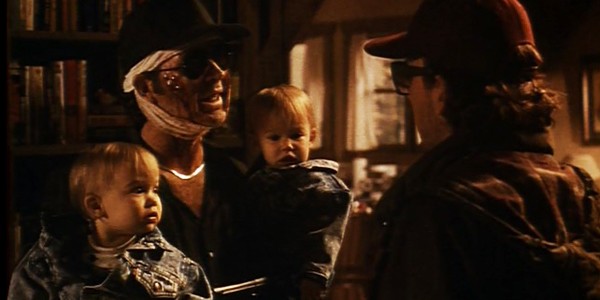
Thad Beaumont is an author of highbrow novels, but he gets most of his income from the best-selling novels he writes under the pen name of George Stark. But, as the public outing is near, Beaumont decides to make a mock funeral for George Stark. Things seem to go okay, but George Stark emerges from his mock grave to seek revenge. That’s the premise of the novel “The Dark Half”, which Stephen King wrote in response to his outing as Richard Bachman.
George A. Romero and Stephen King worked together on several projects and remained friends until the former died in 2017. Romero was frequently called the “father of zombie films”. Unfortunately, due to the success of his zombie films like the classic trilogy “Night of the Living Dead” (1968), “Dawn of the Dead” (1978), and “Day of the Dead” (1985), his other works remain lesser known.
“The Dark Half” was George A. Romero’s first venture in making a film on a large budget of $15 million. The film conveys the dark tone of the novel perfectly. Timothy Hutton is cast against type, in a dual role. He’s equally perfect as both Thad Beaumont and the villainous George Stark. Great dialogue, gory scenes, and a cathartic ending. What went wrong with “The Dark Half”?
Despite being completed by 1991, the movie was kept on the shelf for two years, because of the shaky financial situation of Orion Pictures. Finally, “The Dark Half” was released on April 23, 1993. The film failed to recoup the budget and gained mixed critical reception. Some complained about the film being too gory, others stated it wasn’t scary enough.
“The Dark Half” is more or less a victim of being released at the wrong time. There’s a chance that had it been released when it was completed, it would’ve been more successful. The movie is a perfect adaptation of Stephen King’s novel. It’s a dark and brutal picture, which can satisfy both genre and fans of the master of horror.
10. The Night Flier (1997) Directed by Mark Pavia
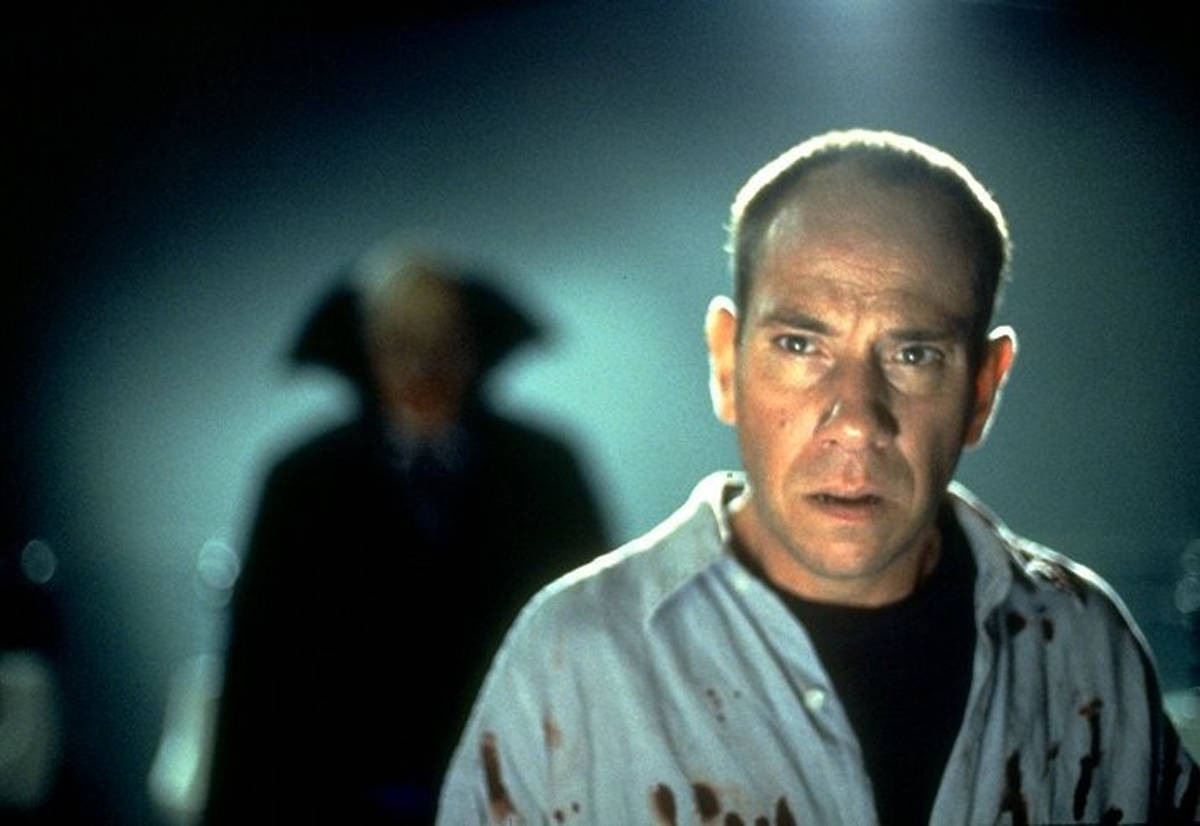
Stephen King’s best-known work about vampires is his second novel, “Salem’s Lot”. But, all in all, King has at least seven works that are either centered around or reference vampires. One of those works is a short story, called “The Night Flier”. The story follows Richard Dees, a cynical tabloid reporter, who investigates the case of the serial killer, nicknamed “the night flier”. The eponymous killer travels between small airports, where he gruesomely murders people. Some clues may suggest that the killer is either a vampire or at least considers themselves as such.
The movie follows the plot of the story pretty closely, except for changing the ending and adding new characters. And “The Night Flier” benefits from the changes. The movie, like its source material, is a commentary on trashy tabloids and true crime exploitation. Yes, there may be an actual vampire, but tabloid journalism is also vampirism of sorts.
Richard Dees is portrayed by the late Miguel Ferrer, who brings depth to this cynical douchebag of a character. From the start of the movie, you know that Dees has it coming, and you anticipate it. Dees seems irredeemable, and he can go to any extreme to get sensational material. With his bloodthirsty journalism, Ferrer’s character slowly finds more and more in common with the Night Flier.
“The Night Flier” gives viewers enough chills, while providing a social commentary. And it has quite a spectacular ending. So, how come it’s so criminally underseen? The movie had a strange release history. “The Night Flier” was released theatrically in Italy, on May 2, 1997. On November 7, 1997, it was aired on HBO. Stateside, it was released theatrically only on February 6, 1998, to minuscule box office results.
Most likely, the convoluted release history contributed to “The Night Flier”’s fading into obscurity. However, it’s one of the strongest Stephen King adaptations, and far more than just a vampire movie.